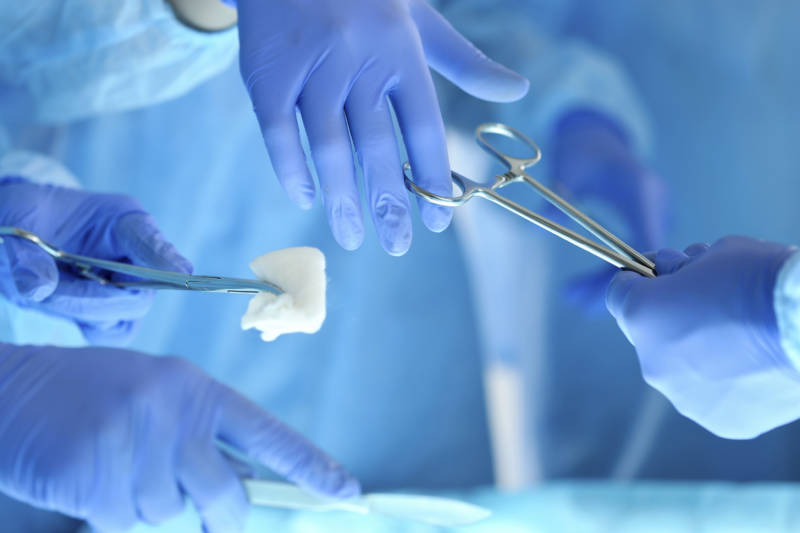And that might be an underestimate: Nurses reported they were less likely to open disposable supplies when they knew they were under observation for the study. Unopened supplies can be reused, but once they are opened they must be used or thrown away.
As health care costs continue to skyrocket, it is important to look for ways to contain them, said Dr. Michael Lawton, a neurosurgeon at UCSF and one of the study’s authors.
Lawton, who was also one of the 14 surgeons observed in the study, said he performs about 400 surgeries per year. If nearly $1,000 per procedure is being wasted on potentially reusable supplies, about $400,000 could be saved per year — for just one surgeon.
“These savings could translate into teaching and research opportunities, and also allow more patients to come in” for treatment, Lawton said.
James Yoon, one of the principal UCSF researchers on the study, said they weren’t only looking at costs but also at the environmental impact of wasted supplies.
Operating rooms in the U.S. produce more than 2,000 tons of waste per day, he said. Some of it is biological and must be safely disposed of. Part of the research involved identifying which surgeries generated the most waste. Spinal procedures, for example, are among the most wasteful, the researchers found.
They also learned that the length of a surgeon’s experience bore no relation to the volume of squandered supplies. More experienced surgeons were not necessarily more frugal.
There is little agreement on how hospitals should address operating room wastefulness. Each hospital or hospital system handles waste in its own way, Yoon explained.
The researchers also recommend price transparency for surgeons. A “feedback system,” Lawton explained, would allow them to compare where they stand relative to their peers in terms of cost per procedure. While not available yet, such a system could encourage better management of operating room supplies, he said.
Another potential way to limit waste is to review surgeons’ “preference cards” — the list of instruments and other items they request for each procedure, Yoon said. Removing unnecessary items from the list and clarifying which ones should be opened at the beginning of a procedure could help save supplies, he explained.
All three of UCSF’s hospitals have been working to reduce waste, said Gail Lee, the director of sustainability for the hospitals and the UCSF campus.
Some medical devices, whether used or unused during surgery, can be reprocessed by an FDA-approved third party company and sold back to the hospital for about half the original sales price, Lee explained. This allows hospitals to save money and cut down on the volume of disposable supplies that end up in landfill.
This strategy saved UCSF hospitals about $1.1 million over the past year, Lee said.
In fiscal year 2011-12, UCSF hospitals diverted 14,000 pounds of would-be waste from landfill by reprocessing both surgery and patient care devices. By last year, that amount had more than quadrupled to 62,000 pounds, Lee said.
“We continue to do better each year,” she said, “but we recognize there is always opportunity to improve.”
